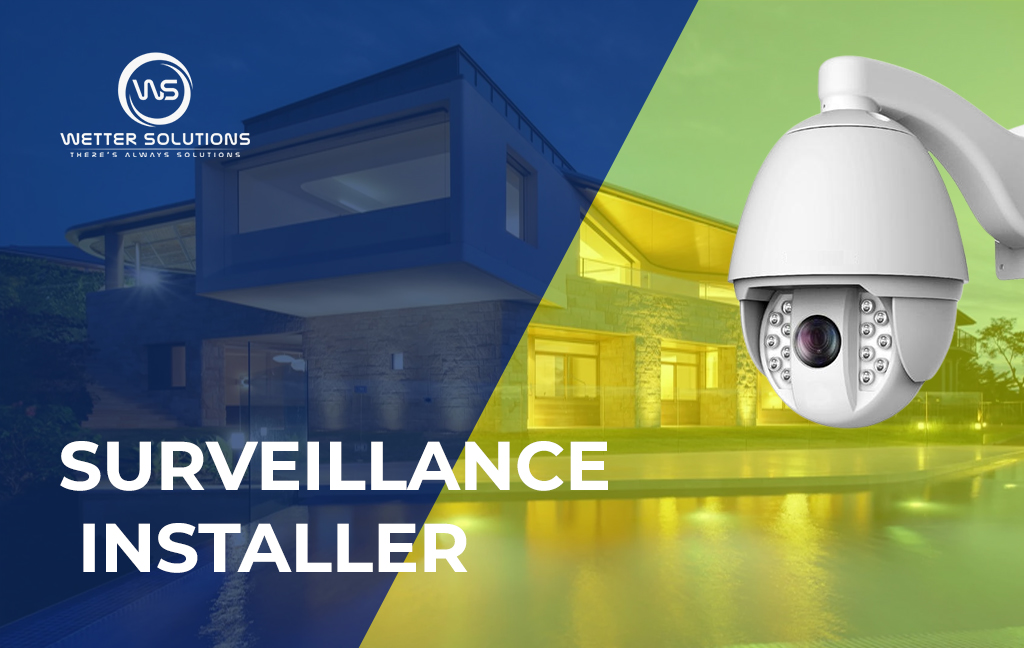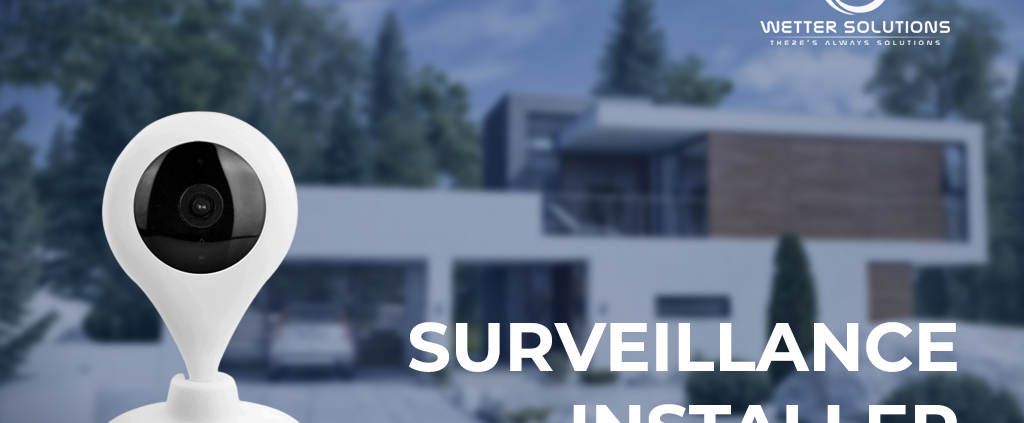Surveillance installer
Over the years, surveillance installer has grown in popularity. Residential residents find applications for it in their daily lives as well as in business and government sites. From monitoring parcels with a doorbell camera to conversing with a new puppy through 2-way audio, home surveillance not only protects your house but can also help you save time with home automation activities. If you’ve considered buying a home security system, you’ve definitely seen how many alternatives are available. A surveillance installer is critical. Almost all circumstances nowadays need a comprehensive security and safety strategy.
The necessity of a good surveillance installer
Whether in a public or private setting, security must be planned to avoid/eliminate disaster. The security strategy must be examined based on the functions and criticality of the sites, with thorough information on intrusion detection, video evaluation, fire detection, access control, and surveillance installer actions based on occurrences. Because today’s surveillance systems are capable of responding with pre-programmed functions when an incident happens. Wired and wireless backup communications must be used to monitor critical locations and operations. In today’s world, remote connection and data backup at the central/remote levels are critical considerations.
The global rise in terrorism and thievery has fueled the proliferation of CCTV/IP surveillance systems to safeguard lives and valuables. The use and integration of video into safety and surveillance installer have matured into a dependable, cost-effective method of analyzing and reacting to terrorist threats and other life-threatening circumstances. A video is a powerful tool for reducing crime, safeguarding assets, and punishing perpetrators.
Security staff is now responsible for entire security and safety systems, with video often playing a crucial role. With today’s rising labor costs and the requirement for each security officer to deliver more utility, video is emerging to be a more cost-effective way of boosting safety and protection while cutting security expenditures than ever before.
Keeping your valuable things safe
If you want to keep the camera safe, try to take pictures from a lofty vantage point whenever you can. In order to prevent individuals from tampering with the camera, position it at a height of about 9 to 10 feet (2.7 to 3.0 m) above the ground. Be careful not to position the camera too high, because otherwise you risk being unable to see the faces of the persons in the frame clearly. Make sure that the camera is mounted in a place that will allow you to get to it easily in the event that you need to make any adjustments or repairs in the future.
Check to see that the future placement of your wired camera is close to a power outlet. You will need to have the ability to run the power wire from the camera to an outlet or some other source of power that is nearby. Determine how close the camera has to be positioned to a power outlet by measuring the length of the power wire that comes with the camera.
For instance, if the length of the power cord is around 1.8 meters (6 feet), the surveillance installer will need to be put at a location that is approximately 5.5 meters (1.7 feet) away from a power outlet. Look around for retail businesses in places you would not expect to find them. If you are attempting to place a camera in the garage, for instance, there may be a power outlet on the ceiling that is easily accessible.
Procedures for a perfect installation
Mounting your camera to the wall may be accomplished with either screws or an adhesive pad. Using the screws that come with the camera mount and either a screwdriver or a drill, secure the camera mount to the wall. If the camera comes with an adhesive pad rather than screws, all you need to do is peel off the plastic covering that is on the sticky pad, and then you can mount the camera on the wall. Before taking your hand away, you should keep your grip on it there for at least a minute. To get the greatest results while attaching the mount to the wall, ensure that the screws are driven into the studs that are located beneath the drywall.
Feel free to skip this step if you plan on mounting your covert camera in a different location than on the wall.
In the event that you need to, you may connect your camera to a power outlet or source of electricity. You should now connect the power wire for the video camera to the outlet that you found previously. If you want to conceal your camera from public view, you should also conceal the power line that connects it to the outlet. If your camera is mounted indoors, for instance, you may hide the wire by running it behind a tall bookcase or a long poster. If it is outside, you should think about cutting a hole into the wall and connecting your power line through this hole to a power source. If it is inside, you should just run the wire down the floor.
If necessary, you will need to run video connections from your camera to the storage device. If you purchased a wired camera, it should have come with cables that had the words “To Camera” and “To DVR” printed on each side of the cable. Connect these connections to your camera and DVR by plugging the corresponding ends of the cables into the devices whose names appear on the labels on the outside of the equipment.
You will need to repeat this step for each additional camera that you want surveillance installer. Be careful to position numerous cameras in such a way that they each cover a separate section of your house or place of business if you want to install them. This will reduce the amount of overlap that occurs between the various video feeds and will make your house or place of business as secure as is practically feasible.

The use of IP cameras
The use of Internet Protocol cameras (IP Cameras) on a network: – This would basically imply that the pictures collected can be readily shared on the internet, which would help with remote viewing. Take, for example, the recent assaults on some of the most important sites in the nation’s financial center. If the hotels had the aforementioned amenities, it would have been possible to save a significant number of lives. The terrorists had taken precautions to guarantee that the central monitoring room (also known as the CMR) would be inaccessible. In order to guarantee this outcome, smoke canisters and tear gas rounds had been placed within the CMR. When our commandos attempted to maintain alert, they were unable to see anything since the room was so heavily contaminated with gas. Now, if IP cameras had been used instead of traditional ones, the commander-in-chief and any other operational super commanders who were sitting in the police control room would have been able to readily view the cameras despite the fact that the CMR was filled with smoke. That information would include the location of the terrorists as well as the kind of ammunition they were carrying. It would also imply the evacuation of innocent captives along the path that was considered to be the safest, which would save a significant number of deaths, both among the hostages and among the commandos.
According to what is now thought, these gadgets were present both with the commandos and with the terrorists. However, the most recent models of cameras come with this feature built-in. Therefore, even when the lawbreakers turned off the lights, we would have been able to see them and would have received periodic updates on their whereabouts. This is because we would have been able to see them even in the dark.
As a result of recent developments in surveillance installer technology, a new feature has emerged that enables infrared cameras to show nighttime video in full color. This capability was not previously available. Wetter solutions are already making full use of this cutting-edge capability with the ColorHunter technology that they have developed. These brand new cameras, which are equipped with this technology, bring with them the extraordinary capability of providing protection around the clock, regardless of the lighting conditions. When you combine this with enhanced detection and recognition, which helps limit the number of false alarms generated by motion sensors, you can be certain that these cameras will operate at their very best around the clock.
Installation of Security Systems Equipped with PTZ Technology
PTZ stands for “pan, tilt, and zoom,” which refers to a function of your camera that allows the lens to be moved and refocused. This capability is also referred to by its acronym. The lens of the vast majority of PTZ cameras can be rotated along three axes, providing an infinitely variable range of movement and camera coverage. There are always going to be a few blind spots, but those that are caused by the mounting hardware and the housing of the camera itself are often extremely small.
The ability to rotate your camera from side-to-side or up and down while also zooming in and out in real-time time is the primary benefit of a pan-tilt-zoom camera, which gives you an unprecedented level of control over the field of vision and viewing angle of your camera. This advantage can be accessed through the software that is installed on the actual Network Video Recorder or through the software that is installed on the remote viewing app. Using such a technique, a single camera may be used to monitor a broad region, bringing previously inaccessible items into focus with remarkable ease while maintaining a picture that is perfectly clear.
Concluding remarks
It may be of great assistance to you in achieving your objective of capturing essential footage if the housing of your surveillance installer is designed to withstand vandalism and is of commercial or correctional quality. Housing that is resistant to vandalism not only shields your security cameras from damage caused by human hands, but it may also protect them from damage caused by environmental or industrial hazards. When safety is a priority, ensuring that your surveillance cameras are protected from harm is also a top priority. To ensure that your next security camera system provides the amount of protection against vandalism that you need, it is essential that you discuss your surroundings and your concerns with the consultant who is tasked with overseeing the installation of your cameras.





Leave a Reply
Want to join the discussion?Feel free to contribute!